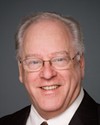Is there an ideal exchange rate? The first point is that Canada has a market-determined exchange rate that reflects the demand for the Canadian dollar from a wide variety of sources and the supply of the dollar as well. The bank, of course, focuses on price stability in Canada as its main policy objective and not on a specific level of the exchange rate.
In terms of the very long run, the dollar tends to gravitate towards its purchasing power parity level, but in any medium term--and that can be for a fairly extended period of time--the dollar can vary quite significantly from that particular level. If one were to say in economic terms what the long-run value would be in some sense, it would be the purchasing power parity level. That would tend to equate prices in Canada with prices abroad, and it would be the level at which, in a sense, the law of one price would rule; effectively there would not be competitive advantages for one country over another country in trade.
That is a very long-run concept. In the medium term and in the short term, prices are moving in all industries, and there is no one exchange rate--particularly for a country like Canada, which has both manufacturing and resources--which is “ideal”.
There's a concept of a common currency zone, an optimal common currency zone, in the economic literature. It says if your production were fairly homogenous of a certain kind of product, then the exchange rate could move towards what is optimal for that particular product. When you produce a very wide range of products, as Canada does, no one industry can ever be satisfied that it has the optimal currency. Does that satisfy your question?


